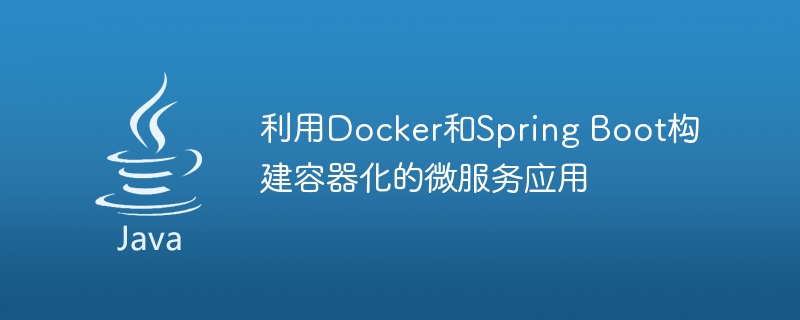

Using Docker and Spring Boot to build containerized microservice applications
Introduction:
With the rapid development of cloud computing, microservice architecture has become a modern construction A mainstream method of application. As a lightweight container technology, Docker facilitates application deployment and management. This article will introduce how to use Docker and Spring Boot to build containerized microservice applications, and provide specific code examples.
1. Build the environment
To build a containerized microservice application, you first need to prepare the corresponding development environment. The following are the steps to set up the environment:
2. Write the code for microservice application
Next, we will write a simple microservice application and use Spring Boot to quickly build a web application.
@RestController
public class HelloWorldController {
@GetMapping("/hello")
public String hello() {
return "Hello, World!";
}
}@SpringBootApplication
public class Application {
public static void main(String[] args) {
SpringApplication.run(Application.class, args);
}
}3. Use Docker to containerize microservice applications
Now that we have written a simple microservice application, we will use Docker to containerize our application.
FROM openjdk:8-jdk-alpine COPY target/demo.jar app.jar ENTRYPOINT ["java","-jar","/app.jar"]
The above Dockerfile specifies the base image as openjdk:8-jdk-alpine, copy the compiled jar package to the container, and set the startup command.
docker build -t demo-app .
where demo-app is the name of the image, which can be Modify according to actual situation.
docker run -p 8080:8080 demo-app
where 8080:8080 specifies the port mapping inside the container To port 8080 of the host, you can modify it as needed.
Conclusion:
Using Docker and Spring Boot to build containerized microservice applications can make it easier to deploy and manage applications. This article demonstrates how to use Docker to containerize a Spring Boot application through a simple example, and provides specific code examples. I hope this article will be helpful to readers in building containerized microservice applications.
The above is the detailed content of Build containerized microservice applications using Docker and Spring Boot. For more information, please follow other related articles on the PHP Chinese website!
 The difference between k8s and docker
The difference between k8s and docker
 Advantages of spring boot framework
Advantages of spring boot framework
 The difference between distributed and microservices
The difference between distributed and microservices
 What are the spring frameworks?
What are the spring frameworks?
 What are the methods for docker to enter the container?
What are the methods for docker to enter the container?
 What should I do if the docker container cannot access the external network?
What should I do if the docker container cannot access the external network?
 What is the use of docker image?
What is the use of docker image?
 How to use php sleep
How to use php sleep




